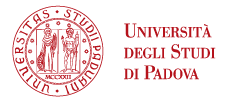
Signaling pathways that control protein homeostasis in muscles
Cardiac and skeletal muscles adapt their mass as consequence of physical activity, metabolism and hormones. Inherited disorders, catabolic conditions, such as cancer, diabetes, AIDS, chronic heart failure, and inactivity induce signaling pathways that regulate the process of muscle loss. The shrinkage of muscle cells in adult tissue, named atrophy, and the consequent weakness occurs when protein degradation rates exceed protein synthesis. Two major protein degradation pathways, the ubiquitin-proteasome and the autophagy-lysosome systems, are activated during muscle atrophy and variably contribute to the loss of muscle mass. Our findings have contributed to identify the mechanisms of regulation of these proteolytic systems. Indeed, we were the first to show that the ubiquitin-proteasome system is controlled by a transcription dependent program that modulate the expression of rate-limiting enzymes (Sandri et al. Cell, 2004). The transcription factors FoxO, which are negatively regulated by Insulin-Akt pathway, were the first to be indentified as critical for the atrophy process. We then found that FoxO family coordinates the activation of the ubiquitin-proteasome and autophagy-lysosome to remove proteins and organelles in atrophying muscle (Mammucari et al. Cell Metab. 2007). However, these proteolytic systems also prevent the accumulation of damaged proteins and dysfunctional organelles. Due to this important role in protein and organelle quality control, these degradation pathways need to be carefully regulated. Indeed, we found that either excessive or defective activity of the autophagy-lysosome or ubiquitin-proteasome lead to detrimental effects on muscle homeostasis and function (Masiero et al. Cell Metab. 2009; Sartori et al. Nat. Genet. 2013). This happens also in inherited muscle disorders. Indeed we found that autophagy was impaired in different muscular dystrophies such as Duchenne and collagen VI deficiency (Grumati et al. Nat. Med. 2010). Moreover, we also showed that restoring a normal autophagy flux in these dystrophies via genetic, pharmacological or nutritional approaches was sufficient to ameliorate muscle function and retard disease progression. Altogether these findings open the field to the concept that protein homeostasis, also named proteostasis, is carefully regulated at multiple levels and that disruption or abnormalities in its control contribute to the etiopathogenesis of inherited and acquired diseases. Our laboratory is focused on the identification of the signaling pathways that control protein breakdown and protein synthesis with a particular attention on the discovery and characterization of novel genes that are involved in autophagy-lysosome and ubiquitin-proteasome systems. To reach this goal we use a genetic approach to either generate conditional transgenic and knockout mice or transfect adult skeletal muscles with expression plasmids to produce recombinant proteins, shRNAs and miRNAs. Muscles are characterized by morphological, physiological, biochemical and molecular techniques in order to get a complete picture of muscles from force and cell size to signaling pathways and genes that are involved in muscle mass regulation
Five recent publications
- Sandri M, Sandri C, Gilbert A, Skurk C, Calabria E, Picard A, Walsh K, Schiaffino S, Lecker SH, Goldberg AL. Foxo transcription factors induce the atrophy-related ubiquitin ligase atrogin-1 and cause skeletal muscle atrophy. Cell. 2004; 117, 399-412
- Mammucari C, Milan G., Romanello V., Masiero E., Ruediger R., Del Piccolo P., Burden S.J., Di Lisi R., Sandri C., Zhao J., Goldberg A.L., Schiaffino S., Sandri M. FoxO3 controls autophagy in skeletal muscle in vivo. Cell Metab. 2007 Dec;6(6):458-71.
- Masiero E, Agatea L, Mammucari C, Blaauw B, Loro E, Komatsu M, Metzger D, Reggiani C, Schiaffino S, Sandri M. Autophagy is required to maintain muscle mass. Cell Metab. 2009, Dec;10(6):507-15
- Grumati P*, Coletto L*, Sabatelli P, Cescon M, Angelin A, Bertaggia E, Blaauw B, Urciolo A, Tiepolo T, Merlini L, Maraldi NM, Bernardi P, Sandri M#, Bonaldo P#. Autophagy is defective in collagen VI muscular dystrophies and its reactivation rescues myofiber degeneration. Nat Med. 2010, Nov;16(11):1313-20.
- Sartori R, Schirwis E, Blaauw B, Bortolanza S, Zhao J, Enzo E, Stantzou A, Mouisel E, Toniolo L, Ferry A, Stricker S, Goldberg AL, Dupont S, Piccolo S, Amthor H, Sandri M. BMP signaling controls muscle mass. Nat Genet. 2013 Nov;45(11):1309-18.




